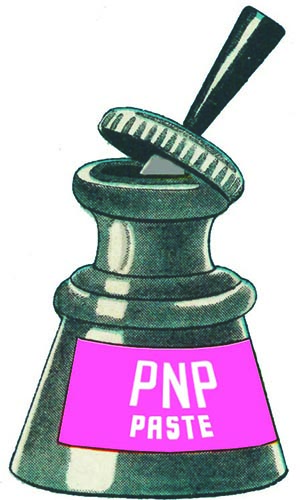The Great Fire of London. [1] You might have heard of it—and if you have, you likely also know that bakers were to blame. That’s right, bakers. Bakers! Bakers, those blessed souls responsible for bringing crusty bread, croissants and cronuts into the world. Bakers, who think of nothing else but feeding the world. Apparently, a professional baker ‘forgot’ to put out the fire in his oven, or didn’t really put it out properly, or something like that. It was hot and dry, London was made out of sticks and straw and pitch, and hey presto, London’s burning.
I put it to you that this theory is ludicrous. A baker, living in a highly flammable house (inflammable, even) made of sticks and straw and pitch would know how to put out a fire properly. And what would a baker get out of burning down half of London, especially the half that contained his own bakery? [2] Insurance jobs were hardly worth the effort back then.
Now, what if I told you that there was someone else who benefited fabulously from the Great Fire of London? It made his fame and his fortune. Without the fire, this person would have been a nobody. Follow the money, that’s what we’re always told on cop shows. So who was this person?
Someone who had earlier proposed St Paul’s Cathedral be completely demolished and rebuilt, calling it ‘a heap of deformities’.
Someone who was no doubt cross when other Londoners opposed his vision and didn’t let him pull the whole thing down. (They did say he could build a dome over the existing tower, though).
Someone who then travelled to Paris expressly to work on a redesign of St Paul’s.
Someone who returned to London from Paris just a week before the Great Fire burned down St Paul’s Cathedral.
Someone who in subsequent years got to blow up bits of the remaining stonework (bonded together by once-molten lead) with gunpowder, thus erasing pretty much any trace of the previous structure.
Someone on whose tombstone (located in St Paul’s Cathedral) is writ ‘Here in its foundations lies the architect of this church and city...who lived beyond ninety years, not for his own profit but for the public good. Reader, if you seek his monument—look around you’. [3]
Are you immediately suspicious of this person? As an esteemed political commentator once remarked, you bet I am you bet you are. So, who is the true perpetrator of the Great Fire of London?
Sir Christopher Wren.
After the Great Fire Wren didn’t just get to rebuild St Paul’s, he got the gig of rebuilding FIFTY TWO (52) churches—amongst other things. The fire established his career and allowed him to ‘afford’ to take a wife. (And then another, when his first died of smallpox. His second died of tuberculosis. Vaccines, eh—what are they good for?).
Wren was highly educated, having studied physics, anatomy, astronomy, mathematics, and other things. Furthermore, he was an architect, and who isn’t suspicious of architects? They are always up to something. Setting a fire and casting the blame on a poor innocent baker would have been a trivial thing for such a man. It is entirely possible the unfortunate Lord Mayor of London (Sir Thomas Bloodworth) was in the pay of Wren, and his failure to act to stop the spread of the fire (‘Pish! A woman could piss it out’ [4]) was recompensed amply once Wren had achieved his success. [5] After all, Bloodworth achieved an immortality of his own, didn’t he?
IT WAS SIR CHRISTOPHER NOT THE BAKER YOU KNOW IT MAKES SENSE.
ALICE CANNON, MELBOURNE
- The one in 1666.
- Actually more like two thirds.
- Boastful much?
- Women can piss quite as much as men thank you very much Sir Bloodworth although our bottoms would have likely been burnt in the process.
- Documentary evidence for this frankly defamatory remark is yet to be located.
The villainous villain himself. Sir Christopher Wren, engraving by S Coignard, 1750, after M Rysbrack. Wellcome Library, London, image no. L0008200, Library reference ICV No 6874.


